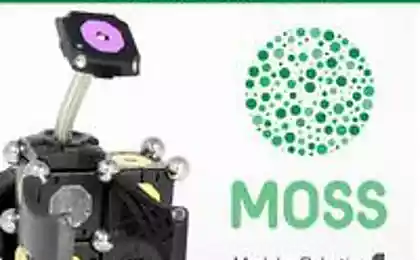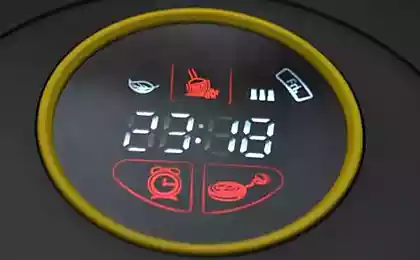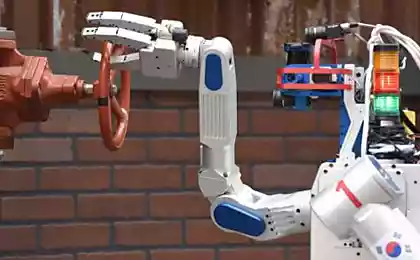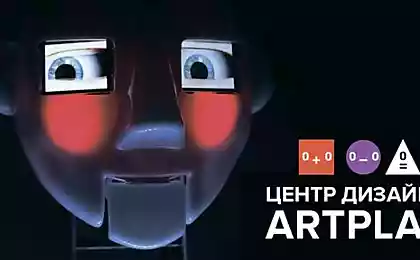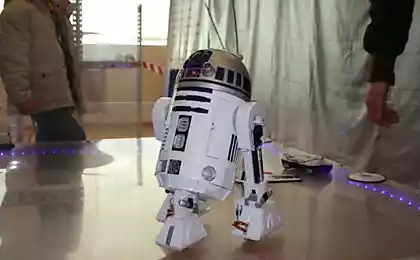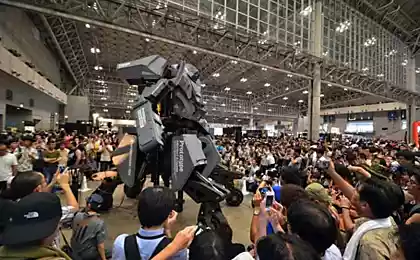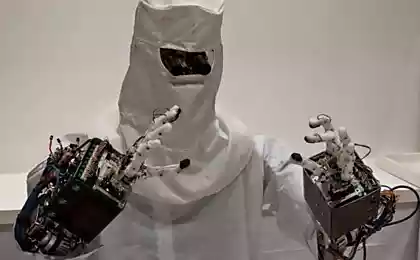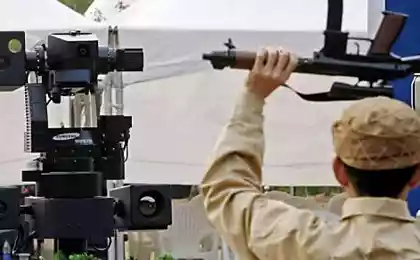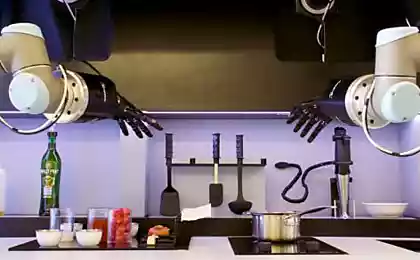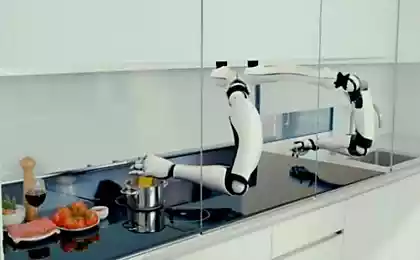957
Controlled robot with only one motor
The picture shows a small radio-controlled robot in six short legs. He is able to move quickly enough on the floor, not running, but rather, crawling like a beetle. Robot called 1STAR, which stands for "1 actuator STeerAble Robot» (single-controlled robot). The design feature of this kid who can not just move, but turning left and right, is the presence of only one motor. It would seem, well, that, because he is also a car. But cars ride on wheels, and here we are talking about crawl
In addition to the motor 1STAR not reversible, rotating in one direction. And if the torque from the engine is transmitted to the legs using a gear-gear, the turning is done through the use of flexible and springy middle legs.
As you can see in the video is only a springy middle pair of legs, a pair of front and rear are made of a hard material. The second trick is to use an accurate design and dosed accelerate the rotation of the motor. At any given time, only three surfaces touch legged robot, delta: front and back with one hand, with the other medium. At the time of a sharp acceleration of rotation of the motor and flexible springy leg slightly bent average and slightly behind the motion of rigid legs on the opposite side. As regards the average surface foot on the other hand, the rotation of the motor slows down. So little robot rotates around the "first" middle leg during which touches briefly accelerating the rotation of the motor. The same principle is rotated tracked vehicles, the speed of rotation of one of the tracks and the car decelerates rotated in this direction. If the engine speed does not change, then the flexible middle legs are in rhythm with the front and rear, and the robot moves straight. Discrete switching acceleration and deceleration of the motor is very fast, people do not even notice it. But it is enough that the robot quite quickly around obstacles.
Of course, this design does not allow to create highly mobile robot, and its reliability is not too high, given the large number of moving parts, including flexible. But certainly difficult to come up with something simpler and cheaper without using a wheeled chassis. Moreover, almost the whole structure can be easily printed on 3D-printer, and the use of only one motor drastically lowers overall cost, especially if it is necessary to make a large number of such robots. Say, for assessing impacts and affected by man-made and natural disasters.
1STAR Zarrouk developed by David (David Zarrouk) from Ben-Gurion University, and Ronald Fearing (Ronald S. Fearing) from the University of Berkeley.
Source: geektimes.ru/post/240750/
Fitbit has introduced 2 new fitness wristband Charge and Charge HR, as well as "superchasy» Surge
Sergey Anchutkin: "I think the world is different"
